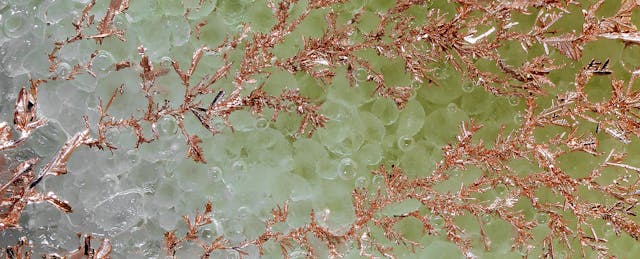Many parents buy chemistry sets to inspire their kids to be future scientists. These kits have evolved over the years from haphazard, 1950’s “Atomic” chemistry sets using radioactive uranium ore, to safer, Smithsonian-branded sets come with goggles, plasticware and large warning labels. The Museum at Chemical Heritage Foundation boasts more than 250 science kits gathered over 100 years to showcase these “miniature laboratories” for children.
What the museum should soon add to its collection are chemistry sets that feature virtual reality technology. These kits are attracting real dollars, too: MEL Science, a company based in the UK, has just raised $2.5 million in Series A funding from Sistema Venture Capital.
Vassili Philippov, a physicist, mathematician and founder of MEL Science, knows how fast science changes with discoveries and breakthroughs. As a parent and educator, he was worried that many students still encounter science through rote memorization, often missing out on the fun and forgetting the concepts after taking a test. “I see science education growing and changing with new things to learn. A huge problem is [figuring out] how to teach it all. I wanted to make a change, so I have dedicated my life to find better ways to teach [science],” Philippov tells EdSurge in an interview.
As a parent, Philippov conducted science experiments with his kids. He noticed the awe and wonder in their eye, and found videos online to explain the chemical reactions. “[Humans] are good at understanding logic, principles and how everything is built when doing something [through] hands-on experiments. But that is not enough,” he explains. “We need to combine experiments with a look inside to see the reaction, zooming in for an explanation to prove what is going on.”

In 2014, he created MEL science kits to immerse the learner through blending hands-on experiments, videos and virtual reality. The kits include chemistry equipment for the experiments, including safety glasses, borosilicate glassware, a fuel stove, syringes, a funnel, a smartphone macro lens and VR goggles, a Google Cardboard device. Access to the MEL Chemistry app is also included. New experiments, tools and chemicals are available each month for those who pay the $49 monthly subscription.
Here’s how the learning happens: First, kids physically conduct experiments, such as burning magnesium with bright flames to ignite a chemical reaction. Next, they slip on the VR goggles, which shrinks the viewer’s perspective to the size of an atom—imagine yourself as Ant-Man, Phillipov says—to see how molecules react around you. Then, a video accompaniment explains how the reaction worked.
The funding from Sistema will help Phillippov grow his staff of 12, which includes a mix of scientists and developers. The company is currently targeting parents and home-schooled students but plans to also expand its market to schools. The company will also expand its content to cover physics and biology and create more VR experiences.
Philippov intends to tap into the market for science education products, which in the U.S. alone exceeds $1 billion, he says. MEL Science is not the only company to incorporate virtual reality and augmented reality into science lessons, however.Lifeliqe displays 3D models of natural phenomena on tablets, using virtual reality through the HTC Vive headset. Late Nite Labs recreates a traditional science lab in an online environment. zSpace is another VR startup that services K-12 school districts providing content for history, anatomy and geography.
Virtual reality allows students to view processes that might not otherwise be visible, Philippov proclaims. He also believes that virtual reality will impact how our brains absorb and process knowledge: “Abstract thinking was not a huge part of [our human brain] 100 years ago; learning was different. In virtual reality you are really there. You are experiencing what is going on. You start to use that part of the brain to see and learn,” says Philippov. “This combination of practical training and virtual reality is the ideal form of learning. It helps you not just memorize but actually understand the essence of the event.”


